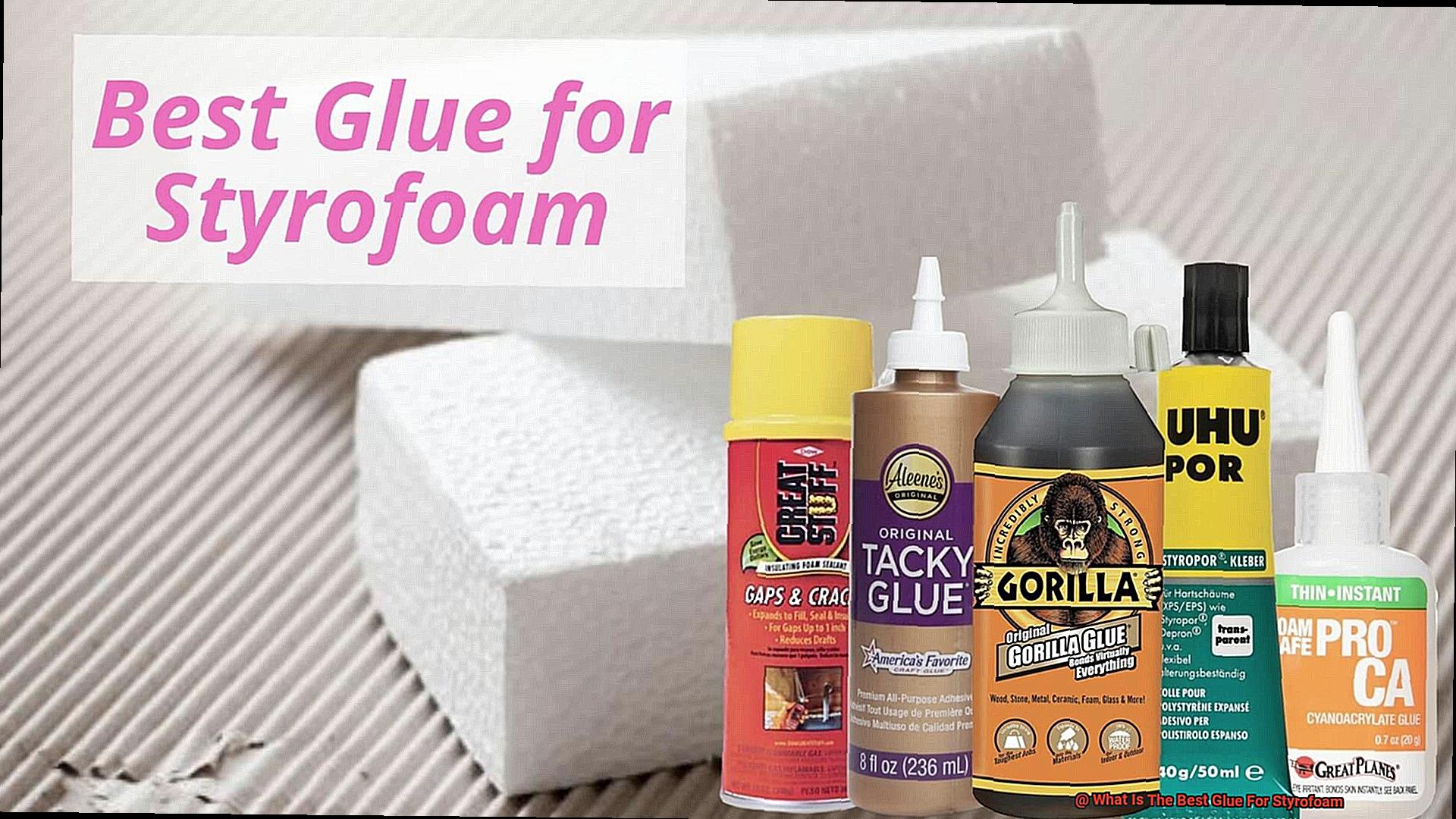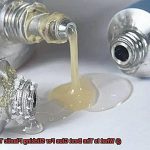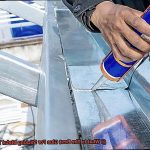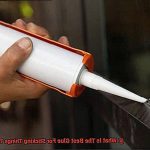Welcome to the world of Styrofoam crafts and projects. From creating stunning floral arrangements to building intricate models, Styrofoam is a lightweight wonder that can bring your creative visions to life. But when it comes to gluing this magical material, finding the right adhesive can be a sticky situation.
With so many glue options out there, it’s easy to get overwhelmed. But fear not. We’re here to help you navigate the sea of choices and find the perfect glue for your Styrofoam needs. In this blog post, we’ll explore a range of glues specifically designed for Styrofoam. We’ll dive into their unique features, advantages, and disadvantages, so you can make an informed decision.
Whether you’re a seasoned DIY enthusiast or just starting out with Styrofoam projects, our comprehensive guide will empower you to select the best glue for long-lasting and stable creations. So grab your crafting tools and let’s dive into the world of Styrofoam adhesives together.
What is Styrofoam?
Contents
Styrofoam, a lightweight material renowned for its insulation properties, has become a staple in various industries. Whether you’re packaging delicate items, crafting intricate designs, or seeking efficient insulation, Styrofoam is the go-to material. In this article, we will delve into the intricacies of Styrofoam, including its structure, characteristics, and environmental impact. Moreover, we will explore the best glues for ensuring a secure bond when working with this versatile substance.
Styrofoam: A Closer Look:
Styrofoam is derived from expanded polystyrene foam. During production, polystyrene beads are expanded using steam and pressure, resulting in a lightweight material with a closed-cell structure. This unique structure allows Styrofoam to effectively trap air within its cells, providing exceptional insulation capabilities. Its lightweight nature makes it easy to handle and transport, while its durability ensures it can withstand substantial pressure and impacts without deformation.
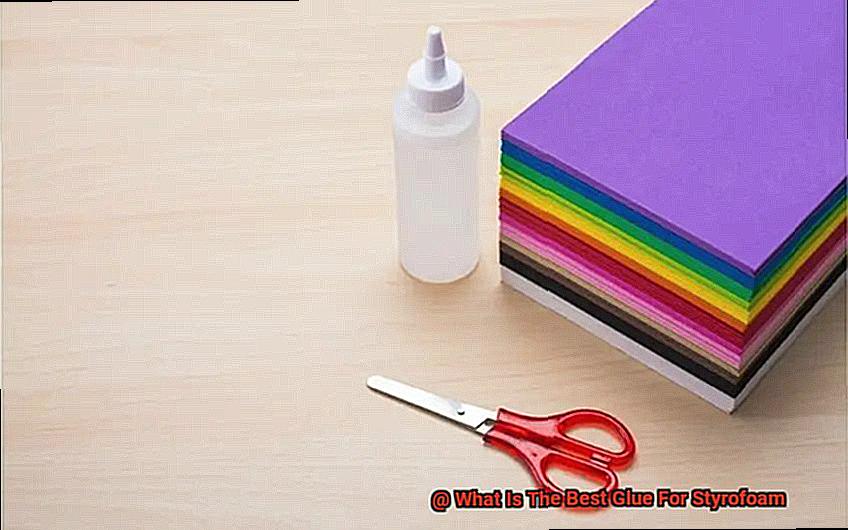
Versatility and Applications:
The versatility of Styrofoam is evident in its wide range of applications. Its excellent insulation properties make it ideal for packaging perishable goods such as food and pharmaceuticals. Additionally, it is commonly used in construction projects for insulation purposes. Crafters also appreciate Styrofoam for its ability to be easily molded into various shapes and sizes, allowing for intricate designs and creative expressions.
Environmental Impact:
While Styrofoam offers numerous benefits, its negative environmental impact cannot be ignored. Unlike biodegradable materials, Styrofoam takes hundreds of years to decompose in landfills. Furthermore, burning Styrofoam releases harmful toxins into the atmosphere, contributing to air pollution. As environmental awareness grows, efforts are being made to find more sustainable alternatives to Styrofoam.
Choosing the Right Glue:
Selecting the appropriate glue is crucial for ensuring a strong bond when working with Styrofoam. Water-based adhesives and hot glue guns are the most recommended options. Water-based glues are non-toxic, easy to work with, and provide a secure bond on Styrofoam surfaces. Hot glue guns offer instant bonding and are suitable for various project sizes. Foam-safe super glue and polyurethane adhesive are also viable choices, offering reliable adhesion for specific applications.
Preparation and Safety Measures:
To achieve optimal adhesion, proper preparation of the Styrofoam surface is essential. Thoroughly clean the surface to remove any dust or oils that could hinder the bonding process. Additionally, consider roughening the surface slightly with sandpaper to enhance the glue’s grip. Always follow the manufacturer’s instructions and exercise caution when working with adhesives to ensure safety.
Types of Glue for Styrofoam
Choosing the right glue is crucial. With a plethora of options available, finding the perfect adhesive can be overwhelming. But fret not. In this ultimate guide, we will explore different types of glues for Styrofoam, their advantages, and considerations. Let’s dive in.
Craft Glue: A Versatile Choice
Craft glue, also known as white glue, is a popular option for bonding Styrofoam. It’s water-based and dries clear, making it perfect for projects where the glue might be visible. Craft glue is non-toxic and easy to clean up, which is ideal for children’s crafts. However, it may not provide the strongest bond and could take longer to dry compared to other glues.
Spray Adhesive: Quick and Easy
For large projects or even application, consider spray adhesive. This fast-drying adhesive comes in aerosol cans and provides a strong bond. It’s convenient for covering large surfaces and ensures an even distribution of glue. However, be cautious as spray adhesive can be messy and difficult to control. Use it in a well-ventilated area and protect surrounding surfaces from overspray.
Hot Glue Gun: Instant Bonding Magic
Need immediate adhesion and versatility? Reach for a hot glue gun. Hot glue guns heat up solid glue sticks until they melt, allowing you to apply the adhesive onto the Styrofoam surface. With fast drying time and a strong bond, hot glue guns are perfect for quick projects or repairs. However, remember to use a low-temperature setting on the glue gun when working with Styrofoam to prevent melting.
Foam Board Adhesive: Designed for Styrofoam
For construction projects or model building involving Styrofoam, foam board adhesive is your go-to choice. This specialized adhesive is designed specifically for bonding foam materials. It provides a strong and flexible bond, which is important for materials that can expand or contract. Keep in mind that foam board adhesive may have a longer drying time compared to other glues.
Specialized Styrofoam Glue: The Expert’s Choice
Finally, there are specialized glues formulated specifically for Styrofoam. These glues are designed to bond Styrofoam without damaging or melting the foam. They usually have a fast-drying formula and provide a strong bond. However, they can be more expensive compared to other types of glue. Consider using these specialized glues for critical projects where the highest bond strength is required.
Water-Based Adhesive
Water-based adhesives are a game-changer when it comes to bonding Styrofoam. Forget about the headaches of melting foam or damaging chemicals. These adhesives, made primarily of water with added polymers and other ingredients, offer a safe and effective solution for all your Styrofoam needs.
First off, let’s talk about compatibility. Styrofoam is notorious for its sensitivity to certain chemicals and solvents. But fear not. Water-based adhesives are here to save the day. They can bond Styrofoam without compromising its integrity, ensuring that your project stays intact.
But it doesn’t stop there. These adhesives pack a punch when it comes to bonding strength. They create strong and durable bonds that can withstand stress and movement. So whether you’re building models that need to withstand rough handling or packaging delicate items, water-based adhesives have got your back.
What’s more, water-based adhesives have a secret weapon – low viscosity. This means they have a thin and runny consistency that easily seeps into the porous surface of Styrofoam. The adhesive fills in all the nooks and crannies, creating a solid bond that won’t peel or separate. It’s like a superhero sealing the gaps and keeping everything in place.
But wait, there’s more. These adhesives are versatile little wonders. Not only can they bond Styrofoam to itself, but they can also attach other lightweight materials like fabric, paper, or plastic to Styrofoam. So whether you’re adding embellishments to your craft project or creating custom packaging solutions, water-based adhesives are up for the task.
And let’s not forget about cleanup. Say goodbye to harsh chemicals and hello to simplicity. Water-based adhesives can be easily cleaned with just water. No need to panic when spills happen or excess adhesive gets in the way. Just grab a damp cloth and wipe it away – easy peasy.
Hot Glue Gun
Look no further than the trusty hot glue gun. In this article, we will explore the advantages and considerations when using a hot glue gun to bond Styrofoam, providing you with all the information you need to make your projects a resounding success.
Advantages of Using a Hot Glue Gun:
Convenience and Affordability:
Hot glue guns are widely available and relatively inexpensive, making them a convenient option for all crafters and DIY enthusiasts. Whether you’re working on a small project or a large-scale creation, you can easily find a hot glue gun at your local craft store or online, saving you time and money.
Easy to Use:
Operating a hot glue gun is as simple as 1-2-Insert the adhesive stick into the gun, wait for it to heat up, and begin bonding. The melted glue is dispensed through a nozzle, allowing for precise application on Styrofoam surfaces. It’s like wielding a magic wand of adhesive power.
Rapid Bonding:
One of the greatest advantages of using a hot glue gun is its lightning-fast bonding capability. As soon as the melted glue makes contact with the Styrofoam, it cools and solidifies in no time, resulting in a strong bond that can withstand the test of time.
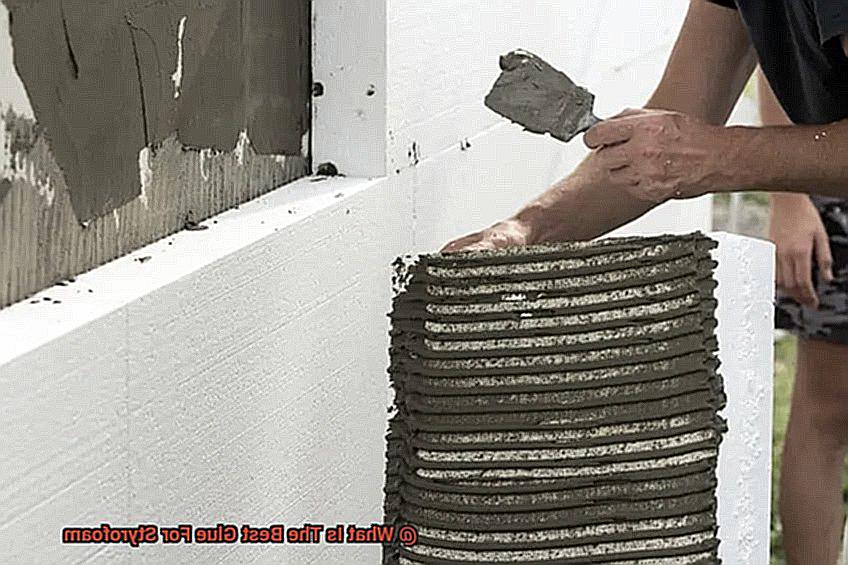
Considerations when Using a Hot Glue Gun on Styrofoam:
Temperature Control:
Not all hot glue guns are suitable for use with Styrofoam. High-temperature guns can generate excessive heat that may cause the Styrofoam to melt or deform. It is crucial to use a low-temperature hot glue gun specifically designed for bonding Styrofoam. Remember, the key to success lies in finding the perfect temperature balance.
Application Technique:
When working with Styrofoam, it is vital to apply the glue with finesse and restraint. Excessive amounts of glue can create uneven surfaces or seep through the porous structure of the foam, compromising the integrity of your project. Additionally, hot glue tends to cool and solidify rapidly, so swift yet precise application is essential.
Bond Strength:
While hot glue guns provide reliable adhesion for Styrofoam, it is important to note that specialized adhesives designed specifically for bonding foam materials may offer stronger bonds. Depending on the requirements of your project, consider exploring these alternatives for enhanced bond strength and durability.
Foam-Safe Super Glue
Foam-Safe Super Glue is a revolutionary adhesive specifically designed for bonding foam materials such as Styrofoam, expanded polystyrene (EPS), and polyurethane foam. Its unique formula sets it apart from regular super glue, as it does not contain solvents that can dissolve or damage the delicate structure of foam.
One of the standout features of Foam-Safe Super Glue is its exceptional bonding strength on foam surfaces. Unlike other adhesives that may weaken or break down over time, this glue creates strong and durable bonds that ensure your foam creations stay intact for years to come. Say goodbye to worrying about your foam projects falling apart – this glue has got you covered.
Another advantage of Foam-Safe Super Glue is its rapid drying time. No more waiting for hours for the glue to set before moving on with your project. This glue dries quickly, allowing you to work at a faster pace and complete multiple steps in quick succession. Time-sensitive projects? No problem. This glue will keep up with your creative flow.
Versatility is another key advantage of Foam-Safe Super Glue. Whether you’re working on a small craft project or building a large foam structure, this glue is compatible with various foam materials, making it a versatile choice for all your foam crafting needs.
In addition to its bonding properties, Foam-Safe Super Glue is also known for its compatibility with different finishes and paints commonly used on foam surfaces. You can add color and texture to your foam creation without worrying about any unsightly reactions or damage caused by the glue. Your finished project will look seamless and professional.
To achieve optimal results with Foam-Safe Super Glue, it is important to follow the manufacturer’s instructions carefully. Apply the glue sparingly and evenly on the foam surface, avoiding excessive dripping or pooling. Allow the glue to dry completely before subjecting the bonded foam to any stress or pressure.
Polyurethane Adhesive
Today, we embark on an exciting journey into the magical world of adhesives, where we’ll shine a spotlight on the superhero of bonding: polyurethane adhesive. If you’ve ever wondered about the wonders it can work on Styrofoam, get ready to be amazed. So, fasten your seatbelts and prepare to discover the advantages of using this incredible adhesive in a casual, professional, and engaging way.
The Power of Quick Curing:
Imagine a glue that dries faster than you can say ‘Styrofoam masterpiece.’ Well, polyurethane adhesive is here to save the day. Unlike other glues that require endless hours or even days to cure, this adhesive works its magic within minutes. With its rapid drying time, you can assemble your Styrofoam projects in no time and unleash your creative genius without delays.
Flexibility for Dynamic Designs:
Have you ever experienced the heartache of a broken bond due to temperature changes? Fear not. Polyurethane adhesive is like the elastic superhero cape for your Styrofoam creations. Once cured, it remains flexible, allowing your projects to expand and contract without compromising the bond. No matter how extreme the conditions, this adhesive has got your back.
Super Strength Adhesion:
Styrofoam’s porous nature may seem like a challenge, but polyurethane adhesive is up to the task. It penetrates deep into the foam’s structure, creating an unbreakable bond that resists peeling or separation. Whether you’re crafting a magnificent sculpture or constructing an architectural marvel, this adhesive ensures your creation stays intact for years to come.
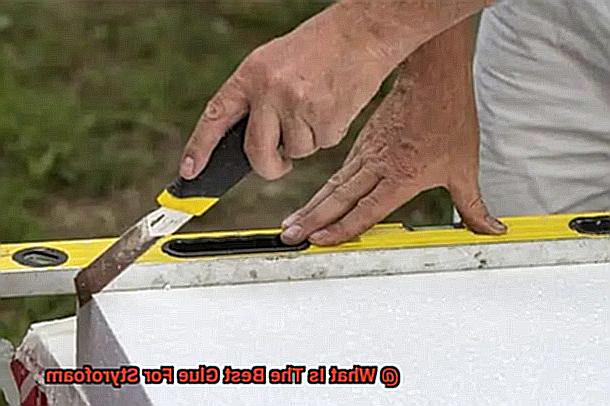
Weatherproof Wonder:
Picture this: you’ve poured your heart and soul into a stunning outdoor Styrofoam project, only to have it ruined by the elements. Fear not, brave creator, for polyurethane adhesive is here to save the day. Its waterproof seal shields your projects from moisture, making it ideal for outdoor applications that might encounter rain, snow, or even the occasional splash.
Considerations Before Choosing a Glue
When it comes to choosing a glue for Styrofoam, there are several important factors to consider. The right glue can make all the difference in the success of your project, so it’s essential to choose wisely. Here are some key considerations to keep in mind before selecting a glue for Styrofoam:
- Compatibility with Styrofoam: Not all glues are suitable for use on Styrofoam. This lightweight and porous material requires a specific type of adhesive that won’t eat away at or dissolve the foam. It is crucial to choose a glue that is specifically formulated for use with Styrofoam or other expanded polystyrene materials.
- Adhesive Strength: The strength of the bond is another critical factor to consider. Depending on the project, you may require a glue with strong adhesive properties to ensure a long-lasting and durable bond. It is essential to assess the strength of the glue and determine whether it meets your specific needs.
- Drying Time: The drying time of the glue can greatly impact your project’s progress. Some glues dry quickly, allowing you to move forward with your project sooner, while others take longer to set. It’s important to factor in the drying time and consider how it aligns with your timeline and project requirements.
- Ease of Application: The ease of application can also play a role in your choice of glue. Some adhesives come in convenient applicator bottles or pens, making them easier to control and apply precisely where needed. Consider the application method that works best for your project and choose a glue that offers ease of use.
- Toxicity and Safety: It is crucial to prioritize safety when working with any adhesive. Some glues may contain toxic chemicals or emit harmful fumes during the drying process. Make sure to read the product labels and opt for glues that are non-toxic and safe for both you and the environment.
- Versatility: Depending on your needs, you may prefer a glue that can be used for multiple materials and applications. Some glues are specifically designed for use on Styrofoam but can also work on other materials like wood, fabric, or plastic. Consider the versatility of the glue and whether it aligns with your future crafting or repair projects.
- Cost: Finally, cost is always a consideration when choosing any product. While it’s important to find a glue that fits your budget, it’s equally important to ensure you’re not compromising quality for a lower price. Consider the value for money and choose a glue that offers both affordability and effectiveness.
Preparation of the Styrofoam Surface
Preparing the surface of Styrofoam is a vital step in achieving a strong and long-lasting bond with glue. It’s like laying the foundation for a masterpiece. To ensure optimal adhesion, follow these expert tips and get ready to transform your Styrofoam projects like a pro.
Step 1: Cleanse and Purify
Before anything else, give that Styrofoam surface a thorough cleaning. Remove any dust, dirt, or debris by gently wiping it down with a soft cloth or using a mild detergent and water solution. Avoid harsh chemicals or solvents that could harm the delicate Styrofoam.
Step 2: Smooth and Rough It Up
To create an ideal bonding surface, grab some fine-grit sandpaper and delicately sand the Styrofoam. The aim here is to achieve a gentle roughness that enhances adhesion without melting or damaging the foam. Once you’re done sanding, wipe away any residual dust using a clean cloth or brush.
Step 3: Priming Excellence (When Necessary)
In some cases, priming the Styrofoam surface is necessary for optimal adhesion. Special primers designed for Styrofoam create a smooth, non-porous surface that enhances glue bonding. Follow the manufacturer’s instructions and allow sufficient drying time before moving forward.
Safety Precautions
When it comes to working with glue, especially for Styrofoam crafting, safety precautions are of utmost importance. Glue can be a powerful tool for creating beautiful projects, but it also comes with potential risks that need to be addressed to ensure a safe and enjoyable crafting experience.
First and foremost, it is crucial to work in a well-ventilated area. Glues used for Styrofoam may emit fumes that can be harmful if inhaled for an extended period. Opening windows or using a fan to circulate air can help prevent any respiratory issues.
In addition to ventilation, it is essential to read and follow the manufacturer’s instructions and warnings. Some glues may contain toxic chemicals, so understanding how to use them safely is vital. This includes wearing protective gloves to prevent skin irritation or allergic reactions.
Eye protection is another critical aspect of safety when working with glue. Wearing safety goggles can shield your eyes from potential splashes or drips that can cause irritation or injury.
Furthermore, keeping glue out of the reach of children and pets is necessary. Ingesting glue can be harmful, so make sure to store it in a safe place after use.
Accidental contact with glue on the skin should be addressed immediately by washing the affected area with soap and water. If glue gets into your eyes, rinse them with water for at least 15 minutes and seek medical attention if irritation persists.
Proper disposal of glue containers and unused glue is crucial as well. Many glues cannot be recycled or poured down the drain, so checking local regulations for proper disposal methods is necessary.
By taking these safety precautions, you can enjoy Styrofoam crafting while minimizing any potential risks associated with using glue. So go ahead and let your creativity flow, knowing that you are protecting yourself and creating art in a safe environment.
To summarize, the key safety precautions when working with glue for Styrofoam crafting include:
- Work in a well-ventilated area.
- Read and follow the manufacturer’s instructions and warnings.
- Wear protective gloves to prevent skin irritation or allergic reactions.
- Use eye protection, such as safety goggles.
- Keep glue out of the reach of children and pets.
- Wash off accidental skin contact with glue immediately.
- Rinse eyes with water if glue gets in them and seek medical attention if needed.
- Follow proper disposal methods for glue containers and unused glue.
1T434GttPHQ” >
Also Read: What Is the Best Glue For Styrofoam? – Glue Things
Conclusion
When it comes to finding the best glue for Styrofoam, there are a few key factors to consider. First and foremost, you want a glue that is specifically designed for use with Styrofoam. This is important because regular glues can actually dissolve or eat away at the material, causing damage and weakening its structure.
One option that consistently gets rave reviews from crafters and DIY enthusiasts is foam-safe adhesive. This type of glue is formulated to bond effectively with Styrofoam without causing any harm. Its gentle yet strong formula ensures that your projects stay intact and secure.
Another popular choice among styrene foam aficionados is hot glue. The high temperature of the glue creates an instant bond, making it ideal for quick fixes and small projects. However, it’s important to exercise caution when using hot glue on Styrofoam, as excessive heat can cause the material to melt or warp.
For larger projects or applications that require flexibility, liquid nails adhesive can be a great option. This type of adhesive provides a strong bond while still allowing some movement in the material. It’s perfect for creating durable structures or attaching Styrofoam to other surfaces.
In conclusion, when it comes to choosing the best glue for Styrofoam, opt for foam-safe adhesive for general crafting purposes. If you need a quick fix or have smaller projects, hot glue can be a convenient choice. For larger projects requiring durability and flexibility, liquid nails adhesive is your go-to option. Whatever you choose, make sure to follow the manufacturer’s instructions and test on a small area before applying it to your entire project.

